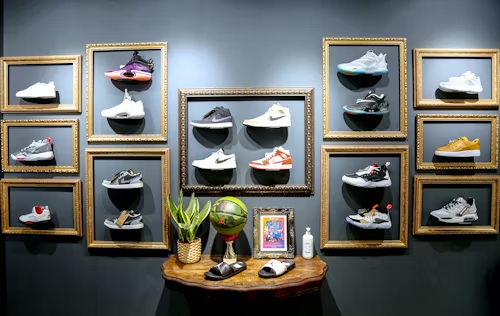Decluttering and organizing can be a daunting task, but it is an essential part of creating a functional and stress-free living space. Clutter can contribute to feelings of overwhelm and anxiety, while an organized home can promote a sense of calm and productivity.
The first step in decluttering and organizing is to assess the current state of your living space. Take a walk through your home and identify areas that are cluttered or disorganized. This could include overflowing closets, messy kitchen cabinets, or a cluttered desk. Once you have identified the areas that need attention, it is time to create a plan of action.
Creating a plan can help you stay focused and motivated throughout the decluttering and organizing process. Start by setting realistic goals and timelines for each area of your home. For example, you may decide to tackle your closet over the weekend and your kitchen cabinets during the following week. By breaking the process down into smaller, manageable tasks, you can avoid feeling overwhelmed and stay on track towards your goal of a clutter-free and organized living space.
Getting Started with Decluttering
Decluttering can be an overwhelming task, but with the right mindset, preparation, and a solid plan, it can be an extremely rewarding experience. In this section, we will explore the different aspects of getting started with decluttering, including understanding the decluttering process, creating a decluttering plan and schedule, and decluttering tips from experts.
Understanding the Decluttering Process
Before diving into the decluttering process, it is essential to understand what it entails. Decluttering involves going through all of your possessions and deciding what to keep, donate, or discard. It is important to start small and focus on one area at a time to avoid feeling overwhelmed. Decluttering can be a time-consuming process, but it is worth it in the end.
Creating a Decluttering Plan and Schedule
Creating a plan and schedule is essential to ensure that the decluttering process is manageable and achievable. It is recommended to start with a specific area or room and break it down into smaller sections. For example, if you are decluttering a bedroom, you can start with the closet, then move on to the dresser, and so on.
It is important to set achievable goals and deadlines to keep yourself motivated. A decluttering schedule can help you stay on track and avoid procrastination. You can create a daily, weekly, or monthly schedule depending on your availability. Remember to be realistic and flexible with your schedule.
Decluttering Tips from Experts
Decluttering can be a challenging process, but there are several tips and tricks that can make it easier. Here are some tips from experts:
- Start with items that are easy to declutter, such as clothes or books.
- Keep only the items that you use, need, or love.
- Consider the space you have available and avoid overpacking.
- Use storage solutions to keep your items organized.
- Donate or sell items that are in good condition but no longer serve a purpose.
By following these tips, you can make the decluttering process more manageable and less overwhelming.
In conclusion, getting started with decluttering requires the right mindset, preparation, and a solid plan. By understanding the decluttering process, creating a plan and schedule, and following expert tips, you can make the process more manageable and achieve a clutter-free home.
Room-by-Room Decluttering Strategies
Decluttering a home can be a daunting task, but breaking it down into room-by-room strategies can make it more manageable. Here are some tips for decluttering and organizing each room in your home.
Tackling the Kitchen
The kitchen is often the most cluttered room in the house. To start decluttering, empty out the pantry, cabinets, and drawers. Assess each item and put everything back where it belongs. Start with the powerhouse storage spaces first, such as the pantry and upper cabinets. Then move onto the lower cabinets, drawers, and the space under the kitchen sink. Consider using drawer dividers, shelf risers, and lazy Susans to maximize storage space.
Organizing the Living Room
The living room is often the most used room in the house, and can quickly become cluttered with toys, books, and other items. To declutter, start with a micro-area like one shelf on a bookshelf, a whole bookshelf, or a cabinet in the living room. Starting small will help avoid burnout. Create a blank space by removing items that are not used or do not belong in the living room. Consider using decorative baskets or storage ottomans to store items like blankets, remote controls, and magazines.
Bedroom and Closet Organization
The bedroom and closet can quickly become cluttered with clothes, shoes, and accessories. To start decluttering, empty out the closet and assess each item. Donate or sell items that are no longer needed or worn. Organize clothes by category and color, and use hangers that maximize space. Consider using drawer organizers or hanging organizers for accessories like jewelry and scarves.
Bathroom Decluttering Techniques
The bathroom is often a small space that can quickly become cluttered with toiletries, towels, and cleaning supplies. To declutter, start by removing everything from the bathroom and assessing each item. Get rid of expired or unused products, and consider using wall-mounted organizers or over-the-door organizers to maximize storage space. Use drawer dividers and shelf risers to organize toiletries and cleaning supplies.
By following these room-by-room decluttering strategies, you can create a more organized and functional home. Remember to take it one room at a time, starting with small areas to avoid burnout.
Sorting, Categorizing, and Storing
Decluttering and organizing your home can be a daunting task, but it doesn’t have to be. With effective sorting, categorizing, and storing methods, you can make the process much easier and more manageable.
Effective Sorting and Categorizing Methods
Before you can start organizing, you need to sort and categorize your belongings. One useful method is to divide everything into categories, such as clothes, books, kitchen items, and so on. Once you have your categories, you can then sort each item into its respective category.
Another useful method is to create zones in your home. For example, designate a specific area for storing all of your cleaning supplies or create a zone in your closet space for shoes. This can help keep everything organized and easy to find.
Choosing the Right Containers and Storage Solutions
Once you have sorted and categorized your belongings, it’s time to choose the right containers and storage solutions. There are many options available, so it’s important to choose the ones that are most useful for your specific needs.
For example, if you have a lot of small items to store, such as jewelry or craft supplies, consider using small containers with dividers or compartments. If you need to store larger items, such as blankets or seasonal clothing, consider using storage bins or bags.
When it comes to kitchen storage, there are many useful solutions available, such as drawer dividers, spice racks, and hanging pot racks. These can help you maximize your space and keep everything organized and easy to find.
Overall, effective sorting, categorizing, and storing methods are essential for decluttering and organizing your home. By choosing the right containers and storage solutions, you can make the process much easier and more manageable.
Maintaining a Decluttered and Organized Home
Once you have successfully decluttered and organized your home, it is important to maintain it. Here are some tips on how to keep your home clutter-free and organized.
Daily Habits for Ongoing Organization
One of the most effective ways to maintain a decluttered and organized home is to establish daily habits. This can include simple tasks such as making your bed in the morning, doing the dishes after meals, and putting things away immediately after use. These small habits can make a big difference in the long run and prevent clutter from piling up.
Another daily habit to consider is the “one-in-one-out” rule. This rule states that for every new item that enters your home, you must get rid of one old item. This can help prevent clutter from accumulating and ensure that your home stays organized.
Implementing Systems to Keep Clutter at Bay
In addition to daily habits, implementing organizational systems can also help maintain a clutter-free home. One popular system is the hanger trick, where you turn all your hangers backwards at the beginning of the year and only turn them around once you have worn the item. Any items still on backwards hangers at the end of the year can be donated or sold.
Organizing expert, Marie Kondo, suggests organizing items by category rather than location. For example, instead of organizing your clothes by where they are stored, organize them by type (shirts, pants, dresses, etc.). This can help you see all your items at once and prevent duplicates from accumulating.
There are also many essential products that can help maintain organization, such as drawer dividers, storage bins, and label makers. These products can help keep items in their designated places and make it easier to find what you need.
By establishing daily habits and implementing organizational systems, you can maintain a decluttered and organized home.
Disposing of Unwanted Items Responsibly
When decluttering and organizing, it’s important to dispose of unwanted items in a responsible manner. This means finding ways to donate, sell, recycle, or dispose of your items without harming the environment or contributing to waste. Here are some tips on how to dispose of your items responsibly.
How to Donate, Sell, or Recycle Your Items
One way to dispose of unwanted items is to donate them to a charity or organization. This is a great way to give back to the community and help those in need. Many charities will accept gently used items such as clothing, furniture, and household goods. Some charities even offer pick-up services for larger items.
If you have items that are still in good condition but don’t have a charity to donate them to, consider selling them online or at a yard sale. Online marketplaces like eBay, Facebook Marketplace, and Craigslist make it easy to list your items for sale. Be sure to include clear photos and a detailed description of the item to attract potential buyers.
Recycling is another great way to dispose of unwanted items. Many cities offer recycling programs for items like paper, plastic, and glass. Some cities even offer curbside pick-up for larger items like appliances and electronics. Check with your local recycling center to see what items they accept and how to properly dispose of them.
Dealing with Trash and Junk Responsibly
Sometimes, items simply cannot be donated, sold, or recycled. In these cases, it’s important to dispose of them responsibly. Tossing items in the trash can contribute to waste and harm the environment. Instead, consider hiring a junk removal service to dispose of your items properly. These services will sort through your items and dispose of them in an environmentally friendly way.
If you have items that are not suitable for donation, sale, or recycling, consider repurposing them instead of throwing them away. For example, old t-shirts can be turned into cleaning rags, and glass jars can be used for storage. Good Housekeeping offers a list of creative ways to repurpose common household items.
In conclusion, disposing of unwanted items responsibly is an important part of decluttering and organizing. By donating, selling, recycling, or repurposing your items, you can help reduce waste and give back to the community.



